|
by Nancy Cole Silverman When I began writing Murder on the Med, book three of the Kat Lawson mysteries, I felt as though I was channeling a slightly different voice for my protagonist, Kat Lawson. In the previous two books, Kat was a level-headed, if not a headstrong, reporter determined to follow the story no matter what the risks. But as I opened a blank page on my computer and began to write, I realized Kat needed a vacation.
As writers, we all understand the difficulty in trying to get a character to do something on the page they don’t want to do. Try explaining this concept to a non-writer, and they will look at you like you’re crazy, but writers understand. Our characters either talk to us or they won’t, and when they don’t, it’s because we’ve taken them where they don’t want to go, and they simply disappear! So I went with the idea that we all need a break, and voila! There on the page in front of me was Kat sitting onboard a luxury yacht having High Tea with two elderly British ladies who felt it was their duty to inform Kat of a drowning, or at least what they felt was a probable drowning. It was a nonsensical conversation, for sure. Kat was uncomfortable, aware the two spinster schoolteachers with whom she was having tea were either daffy or drunk. Either way, the scene was the perfect setup for Kat’s next adventure on the high seas, where she’s been rewarded with an all-expense paid cruise around the Amalfi Coast by her employer, Journey International. All she needs to do is write a feature article about Athena, a luxury cruise ship designed as a floating retirement community for seniors wishing to spend their waning years sailing blissfully into the sunset. This assignment her employer promised was just for fun. A bonus for her previous work as a feature writer while working as an undercover operative for the FBI. What could possibly go wrong? It shouldn’t have come as a surprise to me that I would choose a retirement center as the location for Kat’s next adventure. My mother had been ailing while writing this book, and I was spending a lot of time at her retirement complex. Mom was ninety-nine-and-a-half years old when she passed—she insisted I always include the half when referencing her age. She was very proud she had lived such a long and healthy life, and I felt fortunate that I was able to spend time with her at the end. My mother was bright, articulate, and well-read. Her favorite authors were Agatha Christie and Dorothy Sayers. She loved mysteries, and she looked forward to my reading to her what I was working on every day. Without a doubt, she was my biggest fan. My mother loved the idea that Kat’s next adventure would take place aboard a floating retirement center with a bunch of quirky senior citizens. The more I let Kat take charge, the more I began to accept the idea that the tone of this book would be a little different. My theme: A group of rogue seniors trade their pensions for piracy as they sail into their sunset years. I’ll admit I held my breath while writing this book. Would my readers accept a slight change of tone, a blending of genre, in the series? I’m relieved to say early reviews for Murder on the Med have allied my fears, and I’ll share a few.
I don’t know why characters and stories come to writers as they do. But I do know that as a writer, it’s important to trust our instincts. Sometimes, we just need to take that leap of faith and go with what shows up on the page. At the end of the day, I think it makes us better writers. Nancy Cole Silverman spent nearly twenty-five years in news and talk radio before retiring to write fiction. Silverman’s award-winning short stories and crime-focused novels, the Carol Childs and Misty Dawn Mysteries (Henry Press), are based in Los Angeles, while her newest series, the Kat Lawson Mysteries (Level Best Books), takes a more international approach. Kat Lawson, a former investigative reporter has gone undercover for the FBI as a feature writer for a travel publication. Expect lots of international intrigue, vivid descriptions of small European villages, great food, lost archives, and non-stop action. Silverman lives in Los Angeles with her husband and thoroughly pampered standard poodle, Paris.
0 Comments
By DonnaRae Menard The writing process is filled with stress. I don’t believe it matters if it’s a hundred-thousand-word manuscript, a short story, or a blog. No matter how easily words flow from your mind through your fingers to the page, second guessing is inherent. Will the reader understand your plot, or the emotion? Will they care? Are you true to the story line?
In my mind, the easy part is writing the story. The difficult stage is editing. Beta readers asking why? Copy editors slicing and dicing. Got an agent? Well, they have an opinion. Publishers are waiting, red pen in hand. As soon as you blink, they’re on you. What comes next are re-writes, adjustments, updates. Your precious creation. Your baby is about to undergo a healthy dose of Botox. My writing style is behind curtain #3. I am a plodder. I get started, put down everything regardless of order, and when I’m finished, I get busy. Each segment is its own small, stapled bit. I lay it out on the table, shuffle the cards to create order, and then look at the book. Do I like it? Yes. No. Why? Reshuffle, new read. Now, I’m talking to my pre-beta people. There’s a lot of nodding, a couple of what are you talking about, and then I’m ready for production. Finally, I’m face-to-face with the finished piece, complete with cover, and a marketing plan. Pardon me if I giggle hysterically. Where was I? Oh, yes, marketing. When working with a publishing house, they have a plan, but be aware, a lot of it is still in the writer’s lap. Self-publishing? Developing a marketing plan is as stressful as writing the book. Is there another option? Why, yes, there is! I call it seat-of-my-pants. Somewhere during the writing process, I’m already keyed up and telling people about the book. I’ve been told not to do this, but it happens. When I have the first copy in hand, the fun part begins. I’m telling everybody, anyway that I can think of. I love talking about the stories. It’s not so much bragging, as wanting people to read and enjoy. I’ve just never figured out that my joy might not be theirs. I love doing cold calls. I’ll talk to anybody, go to any group that will have me. Case in point. Local church group wanted a woman entrepreneur. They might have been surprised I wasn’t writing Christian, but they were polite. During my spiel, I got invited to a neighborhood book club. Tiny, but engaging. Lovely home, husband walked in, we chatted, he laughed at my energy, asked me if I’d like to do a couple of minutes on local access TV. Wonderland, right? I showed up for the segment, found out it was going to be thirty minutes, not the ten I expected, and, are you ready? It was going to be me and the camera. Also, not expected. I explained I wasn’t good with that and was nervous. He pointed; I sat behind the desk. He sat off to the side and asked, ‘So, when you do a cold call, how does it go?’ Twenty-eight minutes later, the lights came on, the guy held up his hand, and said, “Okay, that’s a wrap!” Bingo, we were done, and his part ended up on the floor, so to speak. DonnaRae Menard began writing in junior high school and has been scribbling since. She is the author of the An It's Never Too Late Mystery series. A 1970's suspense featuring Katelyn Took and 17 cats. The Woman Warrior's series, historical fiction, The Waif and The Warlord, fantasy, Detective Carmine Mansuer series, set in Boston, Mass. Dropped from the Sky, It takes Guts, Willa the Wisp, and several short stories. She splits her time between Vermont and New Hampshire, has an affinity for odd jobs, and rescued cats. Check out her website donnaraemenardbooks.com. Find her on Facebook. Sarah: Somehow we both have written very similar characters, though different
plots, in our first procedural novel. Your book takes place in Laurel, Maine. It's a small town on the coast of Maine that is a tourist area (meaning summer residents), and a small steady population year round. LT Nichols never planned to join the police, and in fact was a bartender when it was suggested to him. My book takes place in Eden County, Florida. A rural county with a tiny year-round population in North Central Florida. Jim Sheppard didn't want to be a sheriff, and he was getting his masters in education so he could teach history, when his wife's death and having a baby son made him decide to drop out of college and go home to Eden County and become a deputy under his father who was Sheriff. In the first book they are both faced with crimes that test their ability to be law enforcement officers, and make both of them doubt their ability to solve the crime. But they are both determined to find out what happened and who did it and why, no matter what roadblocks get thrown in their path. How did you come to write about LT? And why do you think he became a good police chief? Albert: There are so many characters in crime fiction who have extraordinary capabilities, whether it’s incredible powers of deduction or a deep knowledge of psychology or ninja-like combat skills. But none of the police officers that I know and have known are like that. They’re real people who try to do their best in an extremely difficult job. To me, that’s much more dramatic and compelling than the adventures of fanciful quasi-superheroes. (Though I will admit to reading and loving all of Sherlock Holmes—over and over.) LT is a good person with good intentions, like many of us. The difference is that while he realizes his shortcomings, he will not let them get in the way of doing what’s right. He’s not afraid to do the hard things, even if they appear to be beyond his capabilities. The funny thing is that I don’t see The Ruins of Woodman’s Village as a police procedural (though I suppose that’s what it is). I see it as character-driven fiction where the protagonist happens to be a police chief. Maybe that approach is what keeps LT from being a cliché on the page. One thing that Sheriff Jim Shephard has that LT does not is a high level of education and a certain thoughtfulness. LT is a college dropout who was drifting before he joined Laurel’s police force. Jim Shephard was purposely headed in a different direction and yet wound up in the family business: being the Sheriff of Eden County. How does Jim’s educational background and intelligence play into how he approaches his job? Is it at odds with his family history? Sarah: I never thought about LT’s education. That is a difference. Jim Sheppard had a Bachelors and was half-way through his Masters program when his wife died in a car wreck. He’s more educated than most of his deputies, except for Dee Jackson, who is completing her Masters in Criminal Justice. That might be a reason that Jim and Dee connect really well. Jim’s father went to the University of Florida on a football scholarship, which is what he wanted his son to do. He also wanted him to major in Criminal Justice, and instead he majored in history. I don’t think that Jim thinks of himself as better educated, but more that he loves history. I don’t think he considers what education level his deputies have, as long as they are good at their job. He hires a lot of veterans, because he sees them as having experience that prepares them for dealing with violence. In BURNING EDEN, Jim does not feel qualified to solve a kidnapping or a possible serial killer. He is overwhelmed. He really relies on the experience of his deputies. He leans on Dee Jackson, with her Military Police experience, and his contacts in the Florida Department of Law Enforcement who do all the forensic work for Eden County. Jim’s education is at odds with everyone’s in his department, and with his family as well. However, history does educate a person a great deal about human beings. His education has caused him to hire diversely. He has deputies who know the people – all the people – and don’t react according to the prejudices that you’d encounter in a mostly white Sheriff’s department in rural Florida. Eden County is pretty rural. There are a few wealthy people, but the majority of the population is poor. In THE RUINS OF WOODMAN’S VILLAGE, because Laurel is a summer tourist community, there are HUGE differences in wealth that are visible. You continue to deal with this part of being the Police Chief in Laurel in FLOOD TIDE, the next book – where LT Nichols has to work with a very wealthy, politically connected family. LT definitely seems to have issues with the “summer” people who come into Laurel and change the atmosphere a great deal. Does that change how you approach the characters and the crime? Albert: The changing summer demographics and the accompanying dynamics of being in a seasonal tourist town pose additional challenges for LT Nichols. They complicate what is already a difficult job. As the town transforms from a small fishing village into a fast-paced resort every summer, a heightened energy envelopes Laurel. In the simplest analysis, the more people who occupy a space, the greater the chance for interactions that can take a bad turn. In addition, backgrounds and expectations can clash. It’s a lot for LT to handle. At the same time, however, he comes to realize that people, no matter what their socioeconomic status, all want the same things (love, comfort, respect, etc..,) and face the same demons (greed, selfishness, unchecked desire, etc..,). When all these things collide, life gets tough for LT Nichols. Maybe that explains his fondness for a cold Budweiser at the end of the day. Jim Shephard does not exactly have it easy in Eden County, Florida. In Burning Eden and Frozen Eden, the sequel, he faces a different set of challenges, and they come from environmental stressors. In the first book, it’s heat and wildfires. In the second, there are unheard-of wintry conditions and an ice storm. What choices did you make to place Jim and Eden County under these conditions? How do they work into the fabric of who Jim is and his role in the county? Sarah: Florida weather is a bit like “Florida Man,” unpredictable and extreme. The wildfires written about in BURNING EDEN really happened in 1998. There used to be orange trees in South Florida, but the freeze I write about in FROZEN EDEN pretty much destroyed the industry here. Yes, we have long periods of “typical” Florida weather. It includes daily afternoon rains, sunshine in the mornings, and clear skies at night. It’s hot in the mornings and early afternoons, then the rain cools it down for the evening. We have hurricanes and tornadoes. Four Corners, an unincorporated community west of Walt Disney World, has more lightning strikes than any other community in the USA. We rarely have freezes long enough or bad enough to ice roads. We have no salt, no sand, no way to distribute it on the roads if we had it. We still have homes that don’t have any heat! For Jim these conditions change everything. They literally threaten the lives of everyone in the county. They bring out Jim’s best qualities. His empathy and his ability to know how and where to use the strengths of his deputies. He’s a smart man, and it’s enjoyable to bring that out in the open. One of the things I really like about LT Nichols is there’s no artifice about him. He’s a local guy who ended up being the police chief. In both THE RUINS OF WOODMAN’S VILLAGE and FLOOD TIDE, LT has to deal with people who control their world and the people around them with finely developed public personas. From a big man who controls a community through fear to a man who controls his world through wealth and political power, LT never stops pushing for the truth. Even when everyone is telling him to let it go, he simply can’t. Why? Albert: It’s who he is. He is constantly trying to prove something, not to anyone else, but to himself. He’s always been small in stature and often underestimated. But he knows if he’s doing his best, he can live with himself. Although he was a good athlete, it wasn’t until he found wrestling in his youth that he fully applied himself to something. LT realizes that it was giving everything he had to wrestling that made him successful—a state champion. He knows that if he wants to do his job to the best of his abilities, he needs to apply that same single-mindedness to being the chief of police in Laurel, Maine. And while he is correct about that with regards to his work, his personal life can suffer collateral damage as a result. This is something that’s explored in THE RUINS OF WOODMAN’S VILLAGE and carries over into FLOOD TIDE. By being someone who refuses to let himself down professionally, LT steps out onto a tightrope of his own creation again and again. While LT Nichols is a bachelor, Sheriff Jim Shephard is a single father—of a son who wants to follow him into law enforcement. While Jim reluctantly stepped into his father’s role of Sherriff of Eden County, Jim is determined to keep his son, Michael, out of the family business. But in the upcoming FROZEN EDEN, Michael edges closer to an active role in an investigation. This intertwined family and professional dynamic is at the heart of who these characters are and where they are going. How does this weigh on Jim? How does it affect the decisions that he makes, both professionally and as a father at home? Sarah: I think Jim Sheppard feels that his son should have the choice he was denied in life. It’s not that working in the Eden County Sheriff’s Department is a bad choice, but it was a choice he feels he didn’t make. Michael Sheppard has grown up watching his father, and before that his grandfather, do a job that is about doing good in the community. He’s watched his father make changes – a more diverse group of deputies, better educated/trained deputies – and he admires it. While Jim sees being a deputy as limiting Michael’s life experiences, Michael sees it as challenging. Many of Jim’s deputies have greater life experiences – such as serving overseas in the military. Others are better at routine and knowing the people and Eden County’s geography. The variety of experience makes his department stronger, more capable. He can use deputies in different ways, capitalizing on their abilities and experiences. I think he fears that Michael would be “settling” for something familiar and never giving himself the opportunity to grow more as a man by being a part of the outside world. Jim did experience that by going to graduate school and his love of history. Being a father pulled him back into Eden County, which I don’t think he regrets, but that he does feel limited him in ways that he sees other people aren’t. Sarah Bewley has been a private investigator, a freelance writer, and is an award-winning playwright. Her love of mysteries inspired her to write her first book BURNING EDEN. She lives in North Florida with Pat Payne, a visual artist. She rock climbs, takes boxing lessons, and loves reading and dogs. Albert Waitt is the author of Flood Tide, The Ruins of Woodman’s Village, and Summer to Fall. Flood Tide, published by Level Best Books in March of 2024, is the second book of a series featuring Laurel, Maine, police chief, LT Nichols. Waitt’s short fiction has appeared in The Literary Review, Third Coast, The Beloit Fiction Journal, Words and Images, Stymie: A Journal of Sport and Literature, and other publications. Waitt is a graduate of Bates College and the Creative Writing Program at Boston University. Experiences ranging from tending bar, teaching creative writing, playing guitar for the Syphlloids, and frying clams can be found bleeding through his work. By Bryan E. Robinson, Ph.D. When it comes to your inner critic, my advice is to not take advice from someone who doesn’t like you. That’s like returning to the perpetrator for healing after you’ve been abused. —Patrick Califia, writer
Do you hear voices in your head? Of course you do if you’re a writer. Creative people have one relentless voice, in particular, that lives in our heads and never rests—an inner critic that puts us under the microscope, bludgeons us with criticism, and tells us how worthless, selfish, dumb, or inept we are. That kick-butt voice pops up like burnt toast with such lightning speed we don’t even notice, eviscerating us with name-calling, discouragement, and putdowns. The critical voice tells you that you can’t; you should, ought to, have to, or must. It knows where you live and where to find you. And it does. When you’re working on an important deadline, it stalks you to your desk and whispers over your shoulder as you pen a manuscript. It could be scolding you right now. Listen closely. Do you hear it: “No, that’s not right! You don’t know what you’re doing! You might as well give up! Who do you think you are? You’re an imposter.” Burnt toast anyone? The critical voice in our head isn’t who we are. It’s a part of us, not all of us. It’s the lowercase “self.” Who are we, then? We are the captain of our ship—not a passenger, the coach of our team—not a player, the conductor of our symphony—not a musician, the CEO of our boardroom—not a stakeholder. We’re the true writer’s Self with a capital “S”—the writer who hears and sees the lowercase “self” or critic. There’s no use fighting, debating, or arguing with your inner critic. It always has a comeback and always wins, plus you can’t get rid of it. The key is to watch it and let it come and go without personalizing it. When we oppose or try to reason with the Critic, we give it credence and, instead of streaming on through, it takes up residence. Studies show when the critic comes down hard on ourselves after a mistake or failure, it reduces our creativity and chances of writing success. When you think about it, eviscerating ourselves after a letdown is like fighting the fire department when our house is on fire. It’s just as easy to affirm ourselves with positive messages as it is to tear ourselves down with negative ones. The best way to address the inner critic when it pops up is to observe it like you would inspect a blemish on your hand instead of reacting to it. Listen to it with a dispassionate ear as a part of you. Imagine someone scolding you over your cell phone and you hold the phone away from your ear. In the same way, you can listen to the Critic’s message from afar as a separate part from you, not all of you. In addition to hearing it as a part of you, not you, a dispassionate ear gives you distance from the Critic’s voice and keeps you from attacking yourself. Plus, it keeps you from believing the voice’s made-up story. If you’re stuck with your writing, try replacing criticism with Self-compassion (from the capital Self) each step of the way. Self-compassion is a powerful resilient tool that stands up to harm and is more likely to lead to heights of literary success. So put down your gavel and amp up your kinder, compassionate side. In times of writing struggles, give yourself pep talks, positive affirmations, and talk yourself off the ledge instead of letting your Critic encourage you to jump. Vincent Van Gogh once said, “If you hear a voice within you say, ‘You cannot paint,’ then by all means paint, and that voice will be silenced.” Bryan Robinson says, “If you hear a voice within you say, “You cannot write,” then by all means write, and that voice will be silenced.” Bryan E. Robinson is a licensed psychotherapist and author of 40 nonfiction books. He is also author of two murder mysteries—both soon to come from Level Best Books: Way DEAD Upon the Suwannee River and She’ll Be KILLING Round the Mountain. His tagline is, “I heal by day and kill by night.” He is also author of Daily Writing Resilience: 365 Meditations & Inspirations for Writers. His website is www.bryanrobinsonphd.com. by Erica Miner As a writer, I am not a pantser; quite the opposite, in fact. My writing methodology reflects my approach to honing my craft in my former life as a musician. In practicing music, whether as a soloist or as a violinist in the Metropolitan Opera Orchestra in New York, planning was always key. This remains true in my writing life as well.
Writing a novel is much like practicing a concerto or a Wagner opera. Both require a slavish devotion to perfection, with one important distinction. In a concerto, you’re perfecting a piece written by someone else. With a novel, you’re creating your own personal material, and starting with a blank slate. That means meticulous planning. And it all starts with an outline. In a mystery novel, plotting is more complicated than in other genres. Like a jigsaw puzzle, if one piece doesn’t fit exactly, the entire plot is in danger of falling apart. In addition, two important elements must be determined before you can start writing this type of story: the ending, and the identity of the villain or perp. I also think in terms of starting with the ending and working my way backwards to make sure each plot point fits logically with what came before it. When I write my outline, the broad strokes come first: seven or so large beats, the bones of the story. Then I start to expand the beats into detailed plot points. Eventually, I create an in-depth beat sheet of each scene in the book, from beginning to end, making sure to include the characters’ emotional arcs and interactions and relationships with each other as part of every beat. Once I have a rough draft of my outline, I dissect my plot as I do my music, slowly examining every word as I do every note as if under a magnifying class. Without an outline, this would be impossible to accomplish. Writing an outline is very labor intensive, but the rewards are great. It’s a wonderful feeling when I finally allow myself to use this blueprint to write the actual novel. Plus, I have the outline to refer to during the process, adding or deleting, changing, and refining as I go along. Is it any wonder that I outline meticulously? Former Metropolitan Opera violinist Erica Miner is an award-wining author, screenwriter, arts journalist, and lecturer. Her debut novel, Travels with my Lovers, won the Fiction Prize in the Direct from the Author Book Awards, and her screenplays have won awards in the WinFemme, Santa Fe and Writers Digest competitions. Based in the Pacific Northwest, Erica continues to balance her reviews and interviews of real-world musical artists with her fanciful plot fabrications that reveal the dark side of the fascinating world of opera. Aria for Murder, published by Level Best in Oct. 2022, is the first in her Julia Kogan Opera Mystery series. Prelude to Murder, the sequel set at the Sante Fe Opera, was released September 2023. Book three,taking place at the San Francisco Opera is due for release in 2024. https://www.ericaminer.com The Lady Dragons of Brookville features Trixie, Kathleen, and Martha, three middle-aged women from different backgrounds and life experiences, join forces to protect their community. If I were to bump into them on the street, which one would eye me suspiciously?
Lynn, I guess my first question is what exactly are you doing? If you were suspicious, Trixie would totally give you the stink eye and probably ask you some very probing questions. Which one would apologize and then faint? Oh, no doubt, Kathleen. She is the epitome of a real Southern genteel lady. And which one would karate-chop me? Definitely, Martha. Martha, has a take no prisoners attitude and she is a rule girl. If you’re breaking the rules, Martha will be there to get you back on track. It’s sometimes said that there’s always a little piece of a character they create in the author. So, which one of the Lady Dragons do you relate to the most? Not Kathleen. Sadly, my salty language would give Miss Kathleen the vapers. I think there’s a bit of a Trixie and Martha mashup. Trixie’s directness and Martha’s weird fascination with forensics are pieces of my personality. How far did you stray from the original concept to the published book? Overall, I kept the original concept which was a mashup of the Golden Girls and Rizzoli and Isles. However, initially, there was going to be four women. The fourth one was a meeting planner. But, in the end four is a crowd. Without giving away anything, is there a particular scene in the book you struggled with? The opening scene of the first chapter stresses me out. There’s just so much riding on it. One you’re rather proud of? There’s actually two chapters that I was pleased with. The first when Doc and Trixie are at Emile’s restaurant and the second chapter is the well chapter. One that made you laugh out loud? The ladies investigating Camille’s house. Honestly, that chapter tickles me every time I read it. LOVE it! What type of music does Trixie listen to? She likes rock music when she runs, especially Guns and Roses. But Trixie also likes 80’s music. Duh, because everyone knows 80’s music was the best! Kathleen? She enjoys jazz music and the old crooners such as Dean Martin, Frank Sinatra. Martha? Film soundtracks fascinate Martha. She is fascinated by the process of how the music is created to fit specific characters and situations within a film. Describe Trixie, Kathleen, and Martha each with the first word that comes to your mind. One word only. Don’t cheat. Trixie - loyal Kathleen - a pleaser Martha - pragmatic Now, describe Karen in one word. Determined. Your favorite color? Turquoise Beach or mountains? Beach but not the sand. Ice cream or brownie? Brownie. However, vanilla ice cream with the brownie is acceptable. I’m not big on fruit ice cream but I do line peanut butter chocolate ice cream. Steak or lasagna? Both. My favorite steak is filet cooked medium. And lasagna, always homemade. What are you currently working on? Book 2 of the Lady Dragons. In book two, the ladies have formed LDB Investigations. Their first case is trying to solve the murder of a friend. Early in their investigation, they receive threats which puzzles Trixie, frightens Kathleen and delights Martha. The quaint town of Brookville was just what Trixie Tanner needed for a fresh start. The condominium brochure promised, “Your vacation destination for everyday living,” and so far, it was true. She loved her new condo, the charming town, and her new life. But during Trixie’s early morning run, all that changed. A piercing scream shattered the morning tranquility and the illusion. When the body of a young woman is discovered murdered on the condominium trail, Brookville’s idyllic façade starts to crumble. Despite warnings from law enforcement and the formidable medical examiner, Trixie and her new friends Martha, a quirky CSI-wannabe, and Kathleen, a prim and proper retired schoolteacher: the Lady Dragons of Brookville join forces to find the killer and become the voice for the dead. Karen Fritz lives in North Carolina with her husband, two daughters, one maniacal Doberman and a bougie cat. Lynn Chandler Willis is an award-winning author, a Shamus Award finalist, and the first woman in a decade to win the PWA Best 1st PI Novel competition. Her latest book with Level Best is What the Monkey Saw. She lives in a little house on the farm in the heart of North Carolina with her shelter dog, Finn, a happy border collie, and a hand-me-down kitty named Jingles. By Alan Orloff  If you asked 50 writers to describe their “writing processes,” you’d probably get 75 different responses. Some writers stick to a set of inviolable rules, others “meander across the meadow,” while others invoke voodoo dolls and incense, heavy on the incense (substitute “alcohol” for “incense” as required). Hey, whatever works! Here are a few questions to help you “define” your writing process, along with my responses. Are you an outliner or a “seat-of-the-pantser”? I’m an outliner. Maybe it’s my quantitative background and schooling (yes, I’m a reformed engineer), but I feel more comfortable when I know where I’m headed. I think if I tried to wing it, I’d write myself into a dark alley in Newark with no visible path home. (No offense to anyone living in Newark! Or in dark alleys!) When I taught writing workshops and my outliners’ outlines weren’t working, I’d suggest they change their outlines. When things weren’t flowing for my pantsers, I’d suggest they change their pants. Ba da bing! Do you write daily or whenever you can grab a chance? Sometimes I write daily, sometimes I write whenever I can grab a moment. (I know, I know—this is a waffle-y answer. Everything’s not always black and white. Or even gray.) When I’m working on a draft, I’m pretty diligent about writing daily. But between projects, I have to admit I don’t write every day. Of course, if you counted emails and social media posts and bios and those frustrating attempts to distill 80,000 words of a novel into four pithy sentences for back cover copy, then I suppose I do write every day. But that’s not the type of writing I call writing. Do you revise as you go or do you plow through? I’m a big proponent of the Plow-Thru Method (patent pending). When I’m in first draft mode, my only goal is to hit my word quota (see below), quality be damned. That’s what the second draft is for—making my first draft readable. And the third draft is for making the second draft not suck, and the fourth draft is for…well, you get the idea. Do you have a daily quota or do you write for as long as the spirit moves you? Per the Plow-Thru Method, I sit at my computer and type until I hit my daily quota. Sometimes it’s a thousand words, sometimes twelve-fifty, and when I’m really behind, two thousand. Depends on the schedule. After I hit my quota, I move on to other things, even if I’m in the middle of a sentence when I hit my mark. Seriously, I am not joking about getting up right in the middle of Do you write what you want or what you think has a shot of selling? Yes. Do you listen to music when you write? I love music. But I can’t write when it’s on. Same goes for talk radio or TV or the latest episode of Bosch. Alan Orloff has published ten novels and more than forty-five short stories. His work has won an Anthony, an Agatha, a Derringer, and two ITW Thriller Awards. His latest novel is SANCTUARY MOTEL, from Level Best Books. He loves cake and arugula, but not together. Never together. He lives and writes in South Florida, where the examples of hijinks are endless. www.alanorloff.com Writing a novel is like a car trip with a whiney inner child demanding, “When are we going to get there?” For me, the beginnings are easy. The trip is planned, the car is packed and the excitement about a new experience is growing. My planning usually involves a lot of “think time” imagining the story in my head. After I have the concept, I write a synopsis long-hand to give me a sense of where the story is going. Now I’m set.
Except, like a journey to places unknown, often the road isn’t quite clear. For years I’ve struggled with the middle part of the book. Tina de Bellegarde, a Level Best author, put it so well in a recent podcast when she called it “the messy middle.” It’s those chapters that drive the reader to the climax of the story. They need to be vivid enough to keep the reader drawn in and have the details and clues to make the story real. For me, a good middle is like the difference between traveling for miles and miles over flat, boring prairie, or driving the curving highway through the mountains. One will put you to sleep and the other will keep you anticipating the next bend in the road. Recently, I’ve been stuck in the middle. The first chapters of the newest Cabin by the Lake mystery moved quickly. I had my death (was it an accident or was it murder?), my main character pursuing it and the momentum growing. Somewhere mid-manuscript, my writing car drove straight into the ditch and got stuck in the mud. It felt like I was trying to move the story in one direction and the story itself wanted to go somewhere else—somewhere way too complicated for my writing skills. How to get unstuck? In my case, the first thing I did was try writing through it. I kept on the same track with scenes I’d conceived at the beginning of the book. After several days of getting myself mired deeper and deeper into a place that whiney little voice in my head didn’t want to go, I stopped and let it sit. I worked on revising a short story instead. Next, I sat down with my original written synopsis and wrote out a new one. By this time, the story had changed and new characters had popped in. I needed to decide to keep the changes and the new characters or stick to the old road map. With a new synopsis and a better sense of where the story might go, I deleted the most recent chapters. Oh, I admit, it was painful but necessary. Didn’t someone once talk about the need to kill your darlings? Well, I sent them off a cliff. Was I renewed? Was the car out of the ditch and on its way again, the kid in the back happily occupied with the new landscape? Not exactly. The story still felt flat and a little lifeless. As I told my husband on one of our daily walks, “It’s blah, blah, blah. I’m bored with it.” Perhaps the admission out loud to someone else was the key for me. When we returned from our walk, I realized I needed action to get it going again. I wrote several chapters that included another murder, a wildfire and a daring rescue. The kid in the backseat cheered me on. I’ve reconciled myself that on writing journeys, the middle will often be messy. Here are a few lessons I’ve learned:
Despite my best efforts, I know the car might still go in circles, get lost or hit the ditch once again. Fortunately, as a mystery writer I can always add another body, another cliff or maybe a wildfire to get it back on the road. Linda Norlander is the author of A Cabin by the Lake mystery series set in Northern Minnesota. Books in the series include Death of an Editor, Death of a Starling, Death of a Snow Ghost, and Death of a Fox. Norlander has published award-winning short stories, op-ed pieces, and short humor featured in regional and national publications. Before taking up the pen to write murder mysteries, she worked in public health and end-of-life care. Norlander resides in Tacoma, Washington, with her spouse. By William Ade A rabbi, a priest, and a minister walk into a bar. Hearing someone speak that line, you might lean in, anticipating a good laugh. Maybe your stomach muscles tense, fearful you’re about to be offended. Your anxiety could be from wondering why you're failing to get the joke while everyone else rolls with laughter. Being funny is risky, but when you flop, the embarrassment subsides as soon as you leave the room. Writing funny, however, is more hazardous for a reputation because if it offends, it’s forever in print. A number of years ago, I created a character named Nic Knuckles, a caricature of noirish crime-solving protagonists like Philip Marlowe or Sam Spade. Nic twice starred in published short stories and once won me a hundred dollars in a humor contest. I didn't consider myself a writer of humor until my then-editor at Level Best Books (LBB), Harriette Sackler, commented on the subtle drollness in my first LBB book, Do It for Daisy. Perhaps Harriette was onto something, I thought, but I didn’t pursue the possibility. I had other fiction to write, and I wasn’t sure a character like Nic Knuckles could go 80,000 words and not grow tiresome. It wasn’t until I realized that my fellow Besties were just too darn good at writing crime and mystery stories that I changed my mind. I mean, come on, how could I stand out against so many talented writers of fantastic novels? I needed a niche, and perhaps I really could find a bigger audience by writing humorous crime mysteries. I pitched a series to LBB with Nic Knuckles as the continuing protagonist, and Harriette was all in, giving me a three-book contract in late 2022. (While it is suspicious that Harriette left Level Best Books soon after performing the developmental edit on the Nic Knuckles manuscript, I genuinely believe it was for the dogs.) Not that Nic wasn’t problematic from the start. The style I was emulating was dated and prone to misogyny. A few years ago, when I was workshopping a Nic Knuckles short story, a younger female member of my critique group pointed out that Nic’s use of the word dame to describe women was offensive. I made the change but wondered what my friends at Dames of Detection would’ve thought. That was a lesson learned. Humor is often generational, and yesterday's funny gag might be today's cringe-worthy faux pas. I’d always taken pride in my progressive politics and history of supporting the social causes of women and minorities. But I’m also an old white guy from the Midwest who has stuck his foot in his mouth more than a few times trying to be funny. Therefore, after I finished writing the first draft of Big Scream in a Small Town, employing a diversity of editors and beta readers was essential to keep me from unintentionally causing hurt. My developmental editor for the novel was a young woman with a great sense of humor who just as quickly pointed out gags that fell flat. My editor at LBB, Ms. Sackler, with her broad view of the current publishing environment, provided another defensive layer against tactlessness. Before submitting my final draft, I hired a sensitivity reader and asked the woman to scrub the manuscript again. The sensitivity reader was a good investment, and she identified a few remaining offenders. She wasn’t perfect, however. In the story, I mentioned that Nic Knuckles was a proud graduate of Bernie Madoff High School. The sensitivity reader thought I was disrespecting high school graduates and suggested I change it up. After I pointed out that having a school named after one of history’s greatest fraudsters was the gag, did she realize she missed the joke. Another lesson learned. Humor can be easily misconstrued, so be prepared to defend or defuse. The comedian and podcaster James Creviston talked about the difference between blue and clean comedy, pointing out the multiple variations of each. Although his experience was as a stand-up comedian, his observations were relevant to writing funny. “Clean comedy is a type of comedy that is free from profanity, sexual content, and other topics that may be considered inappropriate for all ages. It is often referred to as family-friendly comedy. Clean comedy can be further divided into four types: club clean, TV clean, church clean, and squeaky clean. Club clean is something that would not offend most people, with no cursing or sexual references. TV clean is comedy acceptable on network television, where innuendo is acceptable. Church clean is tight with no innuendo or hint of obscenity. Squeaky clean are jokes grade schoolers can tell each other.” I’d have to say the first draft manuscript of Nic Knuckles spouting his observations about his experiences was probably club-clean. After three layers of review encouraged me to kill several of my darlings, Big Scream in a Small Town now reads TV clean. Church clean, it’s not, and I'm good with that. Otherwise, Nic Knuckles would have no unique identity and not be humorous, just odd. Another thing I discovered in bringing Nic Knuckles to life was that some people would prefer to avoid mixing humor with their favorite genre. Big Scream in a Small Town is faithful to Richard Chandler's Ten Commandments of the Detective Story, and Nic Knuckles is the prototypical noir investigator, but presenting him as an American cousin of Inspector Clouseau was off-putting to some early readers. That awareness created a new concern. How do readers, thinking they just bought a classic crime noir, not feel cheated when I fail to deliver on that expectation? I hoped that authoring the book as Nic Knuckles would be sufficient a clue that the story was a parody. My promotional campaign is built around social media using short, funny videos underscoring Nic’s peculiar approach to solving crime. If that doesn’t do it, caveat emptor will have to be my defense. If you're going to write funny, write what you think is funny, but be aware of the risks. There’s a good chance there’s an audience with a similar sense of humor who’ll become loyal readers. Although I suspect the less clean or quirkier you are, the smaller the likely readership. How well will my sense of humor play with readers? I don’t know. Check with me in a year, and we can compare book sales. Then we’ll see whether I’m laughing or not. Hey, did you hear the one about the writer of cozy mysteries who didn't like cats or dogs? Yeah, I know. The premise is too unbelievable to be funny. William Ade was born and raised in a large family in small town Indiana during the fifties and sixties; an experience that strongly influences his writing. While attending graduate school at the University of Illinois, he met and married his wife, Cindy and following graduation, they headed to the East Coast. After settling in Northern Virginia, they raised two children into adulthood. Those years of love and life also influences many of his stories. Ade’s latest novel, written as Nic Knuckles, is Big Scream in a Small Town and is the first in the Nic Knuckles Collection published by Level Best Books (LBB). LBB also published his crime novel, Do It for Daisy in 2021. Other novels by the author includes, The Man Who Fixed Things (2023), Art of Absolution (2019), and the serialized The Inevitable Failure of Jonathan Golding (2022). His short story collection, No Time for His Nonsense was released in 2019. His short stories have appeared in Mysteries Unimagined, the Rind Literary Magazine, The Broken Plate, Black Fox Literary, Mindscapes Unimagined, and the 2018 and 2019 Best New England Crime Stories. His short story, Punch Drunk, will be part of the 2023 Chesapeake Crimes: Three Strikes – You’re Dead anthology. by Heather Weidner  What’s your writing process? This is what works for me. If something resonates with you, give it a try. If it doesn’t work with your schedule and lifestyle, stop and try something else. With this method, I can usually write three mysteries a year. My first novel took five years to write and another two to get published. I edited each little paragraph and chapter, and I did hundreds of rewrites. The revision focus was good, but I never got around to finishing the book. I also read every writing book I could get my hands on. I finally picked the ones that spoke to me and donated the rest of them to the Friends of the Library. It was time for BICFOK. I learned this from the amazing Alan Orloff. BICFOK is butt in chair, fingers on keyboard. Tune out the distractions and write. Writing is a business, and most readers read a lot. For me, seven years of prep was too long. I knew I had to find a way to speed it up if I wanted to be a published author with more than one book credit. I write cozy mysteries, and they’re generally between 71 and 75k words. I write a series, so I try to think about the next book, and I also make sure to mention something that happened in a previous book to remind readers of past adventures or to peak their interest if they haven’t read the earlier books. Getting Started - I spend about 2-3 weeks doing a summary outline for each book. This helps me see plot holes. It helps me know where to add clues and red herrings. It also lets me plan out the murder or caper. I know who does it and why. It also keeps me from getting stuck in the saggy middle of the writing process. I know what goes in each chapter. This summary also helps me write the dreaded synopsis later. It is the plan or roadmap when I have to pick up the project on different days. The Outline - When it’s done, I look over each chapter to make sure there’s enough suspense. Sometimes as writers, we want to move on to the next thing, but you need to slow down the action to build tension. I also highlight the comic events and the romance to make sure they’re sprinkled throughout the story. I also check to make sure there are enough motives for some of the other characters, so it might be plausible that they are the guilty party. The Characters - I have a spreadsheet for each book in the series. It has a column for each book. I list basic facts for each person to make sure I keep important attributes consistent. Examples include what kind of car they drive, personality traits, hair color, eye color, etc. I also have a second chart to list key places in the book. The First Draft - When I sit down to create the first draft, I just write. I don’t go back and edit and revise. I just write. This is what the great Mary Burton calls the “sloppy copy.” During the writing time, I set a word count goal to keep me on target. I usually do 1k on days I have to work and 3k on weekends and holidays. If I stick to my schedule, I can usually have a rough, first draft in a little over two months. Life does get in the way sometimes. When that happens, I try to write ahead of my word count goal. If I can’t plan ahead, I don’t beat myself up over it. I also don’t stop to research or verify things while I’m writing. I make a note in the manuscript and highlight it. That way, I know to go back and check on it during revisions. Keep writing. Time for Revisions - When I finish the first draft, I let it sit for a couple of days. Then I jump into revision and editing mode. I usually do three or four full revisions on the entire book. I print it out and proofread on paper. I run spell check each time there is a round of revision to catch any little typo gremlins that found their way into the story. Beta Readers and Critique Group - When I think I’m done with the revisions, I let critique or beta readers give it a whirl, and they always provide good feedback. When I get their suggestions back, I do more revisions and proofreading. Editors - I am so fortunate to have a fabulous agent and great editors, so I don’t pay for an independent editor anymore. But before I had these amazing resources, I did hire an editor to go through my manuscript. You often get one chance to pitch to an agent or publisher, and I had to make my work the best it could be. Each round of editing leads to more revisions and proofreading. (Spoiler alert: When the publisher gets the manuscript, there are several more rounds of revisions and proofs to check.) The Agony of Deadlines - One book in each of my three cozy series comes out each year. I don’t write well under a lot of pressure, especially of a looming deadline. I try to write ahead of my deadlines, so I have time for the hours of revisions ahead of my contract deadlines. Flexibility and Grace - I create my outlines and daily word counts as tools to keep me on track. If I need to add or remove a chapter to make the book better, I just make a note on the outline and write on. And if I don’t make my word count one day, it’s not the end of the world. Life happens. I try to get back on track during the next writing session. This is what I’ve found works for me. Try pieces and parts that appeal to you but know that your style is your own. If something doesn’t work, try another technique. Through the years, Heather Weidner has been a cop’s kid, technical writer, editor, college professor, software tester, and IT manager. She writes the Delanie Fitzgerald Mysteries, The Jules Keene Glamping Mysteries, and The Mermaid Bay Christmas Shoppe Mysteries.She is a member of Sisters in Crime – Central Virginia, Sisters in Crime – Chessie, Guppies, International Thriller Writers, and James River Writers. Originally from Virginia Beach, Heather has been a mystery fan since Scooby-Doo and Nancy Drew. She lives in Central Virginia with her husband and a pair of Jack Russell terriers. Shawn Reilly Simmons It’s hard to believe it’s already the end of 2023, and the new year is only a few days away. Time has passed quickly, and while that’s a cliche, it seems especially true this year.
It’s been twelve months since I wrapped up my cancer treatments, having spent all of 2022 going back and forth to Baltimore every week until I finally turned the corner at Thanksgiving that year. While some memories are beginning to fade around the edges from that traumatic time, much of it still feels like it just happened, even though I now have the whole of 2023 under my belt without anyone poking me or pumping me full of chemo yuck. My focus this year has been on rebuilding, repairing, reevaluating, restoring, and reassessing every aspect of life and work. It’s been a lot of hard work to catch things up, get back to normal, and rebuild every aspect of life from zero, all the while dealing with the small whispers in the back of my mind I could be called back down to Baltimore any minute to start treatments up again. But after each checkup, I gained more confidence that I was truly done with all that and out of the woods. PTSD is common among survivors, and I’m here to tell you, it’s a thing. As a former runner, it was such an achievement, both mentally and physically, to simply start walking every morning. I could only make it to the corner and back at first, then around the block, and now I can go as many miles as I want. That training came in very handy when I made it to Bouchercon in San Diego, where I connected with over forty “Besties.” I was fit and ready to meet with so many of you for one-on-one meetings on multiple days. Our “selfie” photos were so popular I had people messaging me when they hadn’t seen one of you yet (I even had one person ask if I could do one with Rhys Bowen….not a Bestie…). We went “mystery world viral” at Bouchercon! It truly was a magical trip and a highlight of my year, spending time with so many of our authors. We’re so proud of you. Seeing so many of you in one place was amazing. In November, I was invited to be the keynote speaker at an oncology/hematology conference in Hershey, Pennsylvania. The attendees were all healthcare professionals, everyone from medical staff to insurance firms to legislators who advocate for cancer patients and research funding on Capitol Hill. The theme of my speech was staying positive through cancer treatments. It was my first time giving an hour-long speech, an experience I’ll never forget. The audience consisted of people who have dedicated their careers to helping people like me, people who deal with this devastating disease on a daily basis and I had them laughing and crying at different points during my speech. But the main point was they appreciated hearing about my experience and what things are like from a patient’s perspective, especially a patient who remained positive through some of the worst medical experiences you can imagine. The title of my speech was “What Kind of Life Do You Have?” and my answer is I have a pretty great life, regardless of everything that’s been thrown my way from the very beginning to today. It’s a well-known thing in their line of work: patients who stay positive almost always fare better through treatment than those who don’t. I believe this concept applies to everything we choose to take on in life. Writing this speech (9,000 words!) wasn’t hard for me. I have always lived a life of gratitude and thankfulness. Every morning, it is my habit when I first wake up to say “Thank You,” and then I list all the things I’m grateful for. My list begins with the new day, my good health, and my loving family, then radiates out to include things like living in a beautiful and safe place, owning a home, having friends I can count on, working in a career I love…the list goes on. Every day on my list, I offer thanks and gratitude for Level Best Books, those of us who own and work at the publishing house, the business we’ve built, the relationships we’ve developed, and the ever-growing list of talented authors we publish. Verena and I could not have predicted what this year would look like eight years ago when we decided to take on this press that was ceasing operation. I saw a post on Facebook, and for some reason, I knew we had to have it. A few weeks later, I was on my way to Boston to sign the papers to take ownership. Acquiring LBB was one of the luckiest and best decisions ever. Each year, we grow by learning, improving, and refining, all while remaining grateful for all those stages of growth. It’s a business, so there are some days that are less fun or more challenging than others, like everything in life, but overall, we are so proud of where we are right now. Most of all, we are incredibly excited about the future. This was also a year of transition and change. We went from three partners to two and reassigned those affected authors to new primary editors. I am so grateful to be working with my newly acquired writers, and now the LBB workload is evenly distributed. In May, right after the convention, with a full year’s notice, I resigned from my paid position at Malice Domestic, at which time I turned over all duties, passwords, assets, sites, platforms, etc., and had multiple meetings, zooms, and calls to help ease the transition to my replacement(s). It was a difficult decision to leave a position I’d held for so long, but once you’ve been through what I have, things become very clear in the aftermath. While giving up a regular salary, I was stretched thin workwise, and the workload on the Malice board was nowhere near evenly distributed. I decided my focus going forward will always be on my health (physical and mental), my family, my writing, and our publishing business. That’s more than enough for anyone to manage well. My “retirement” from convention planning didn’t last long, however. Two months later, Bouchercon recruited me to join their board, and I will co-chair Bouchercon in Washington, D.C., in 2027, along with Cheryl Head. I’m honored to have been asked and am excited to be working with a professional group of mystery convention planners—with an evenly distributed workload! In 2023, Level Best published 138 books. Each was read multiple times: to be acquired, for developmental edits, line edits, and proofread. Each book was formatted for publication in multiple formats by our wonderful production editor, who will always and forever remain nameless and anonymous. Cover art was created in-house for all but a handful of our titles (by me!). In most cases, two to three designs per title were created for consideration (400 or so cover designs!). While, as the publisher, we have the final say on cover art, we like to see what our authors think and offer a variety of choices. Advance Review Copies were created, printed, and shipped to assist our authors in the promotion of their titles. We submitted our titles for review and award consideration and kept our fingers crossed for you all. We were so proud this year to have had titles nominated for the Agatha, Lefty, Silver Falchion, Shamus (winner!), and Anthony Awards (I hope I’m not missing any!). We are thrilled by every nomination and good review our books receive. We are so excited every time we hear something has gone well for one of our authors, that they’ve had a new success, found a new fan, or gotten some well-deserved recognition, local press, or shout-out for their hard work. Our daily focus is to maintain the good energy going forward and keep the tide rising, the one that’s lifting all of the boats. All of this is possible due to the dedicated staff at LBB. Verena and I are very grateful for Deb, the rest of our staff, and our wonderful in-house agent, Cindy Bullard. They all work hard daily to move the business forward, keep things under control, maintain editor sanity, and all matter of other things that may come up, no matter the situation. We’ve been working on things behind the scenes to ensure 2024 is our best year yet. We’re very excited about the new marketing initiatives we’ve been developing, and as always, we are seeking new opportunities for our authors. More to come on all of that. Now, when anyone asks me what kind of life I have, I do not hesitate. I’m grateful for everything that has happened, good, bad, and otherwise, and I’m very excited to see what this new year brings us all. Here’s to a happy and healthy 2024! All the best and big love, Shawn Shawn Reilly Simmons is the author of nine novels in the Red Carpet Catering mystery series featuring Penelope Sutherland, chef-owner of a movie set catering company. She’s also written several short stories which have been published in various anthologies, including “Burnt Orange” in Passport to Murder: the 2017 Bouchercon Anthology; “The Prodigy” in Mystery Tour, the Crime Writers' anthology. In addition to her own writing, Shawn is President and Managing Editor at Level Best Books, a crime fiction press with a roster of roughly two hundred authors. She hosts a weekly podcast, Five Compelling Questions with Shawn, where she chats with writers across all genres about writing. She is also a co-host of the YouTube series We Are What We Read, which features authors highlighting books that have inspired and influenced them and their careers. She is a member of Sisters in Crime, Mystery Writers of America, the International Thriller Writers, and the Crime Writers’ Association in the UK, and a founding member of The Dames of Detection. Shawn served on the Board of Malice Domestic for over twenty years (2002-2023), where she welcomed hundreds of mystery writers and fans to the Washington, D.C. area each spring to celebrate the genre of Traditional Mystery and Agatha Christie. Shawn lives in historic downtown Frederick, Maryland, with her husband, son, and Dino, their very huggable French Bulldog. |
Level Best AuthorsMusings from our Amazing Group of Authors Archives
July 2024
Categories
All
|
Level Best Books18100 Windsor Hill Rd
Olney MD 20832 |
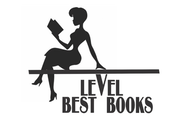









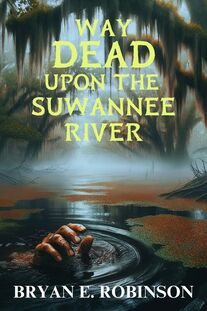

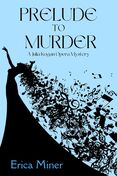
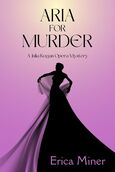
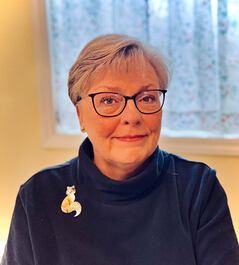
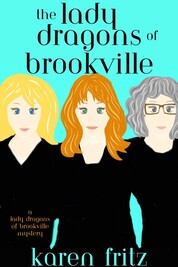
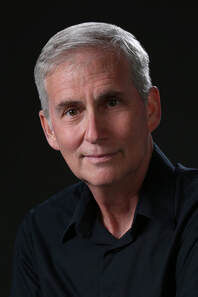
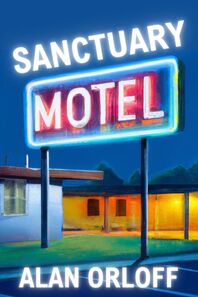
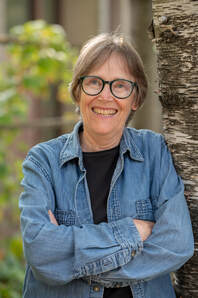
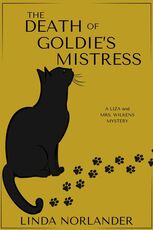

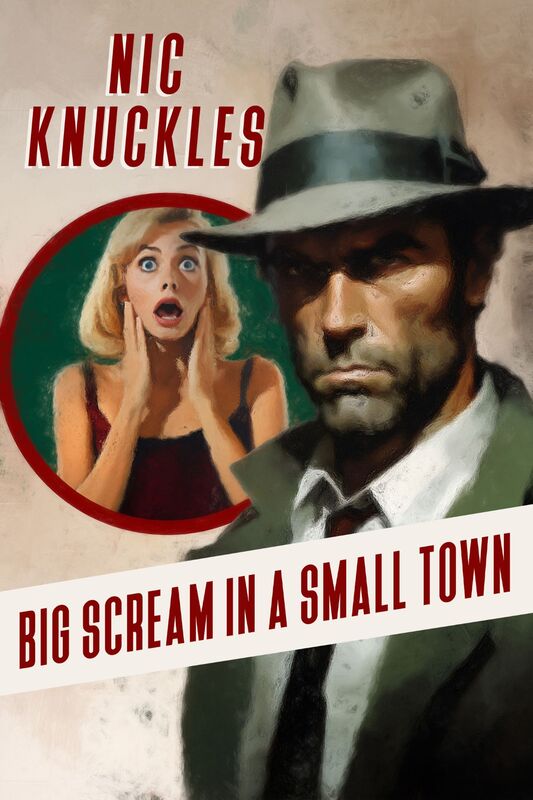
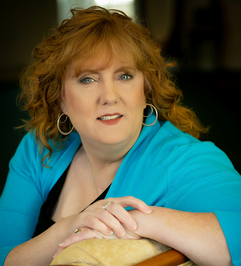
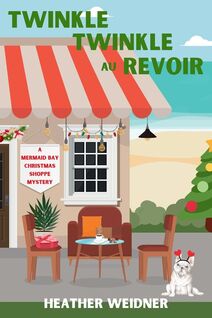
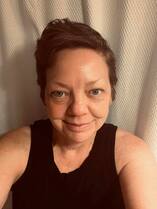
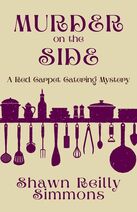
 RSS Feed
RSS Feed